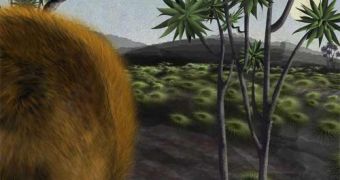In recent investigations, experts determined that some of the moa eggs they discovered over the past few years in in fact belong to other species than those they were initially correlated with.
But this finding also raises some interesting questions in itself, such as for example how did animals that weighed a quarter of a ton managed to sit atop an egg with a very thin shell without breaking it.
Scientists for example discovered that the eggs belonging to the two largest moa species were only 1.41 millimeters and 1.06 millimeters thick, respectively.
This is very important to know, given that an adult female moa bird, of the species Dinornis robustus and Dinornis novaezealandiae, could weigh in excess of 250 kilograms, or 550 pounds.
Today, scientists have evidence to suggest the existence of at least 10 moa bird species. The flightless creatures ranged in size from being as big as a turkey to larger than an ostrich.
The largest individuals of the largest moa species could reach a height of 2.5 meters, or 8 feet. The animals were entirely killed off when the Maori settled in New Zealand, at the turn of the 13th Century.
Using DNA analysis techniques, researchers determined that a few of the 36 moa eggs known thus far belong to the two largest species. They say that the method the birds used to incubate the eggs is still a mystery,
Oner of the most interesting explanations is that the males of the species took care of the young ones. This made sense considering that these animals weighed about 165 pound (75 kilograms).
Researchers indeed found some traces that the male had incubated the eggs, but they add that the process must have been extremely difficult.
It would appear that moa eggs have the highest susceptibility to breakage of any other eggs analyzed to date. This mens that it breaks easiest of a full 3,434 species, experts say.
Moa nests were very common in make-up, “consisting of just a scrape in the ground surrounded by a very thin layer of twigs and leaves,” explains David Lambert.
He was a member of the research team that conducted the investigation, and he holds an appointment as an evolutionary biologist at the Griffith University in Australia.
Details of the new study appear online, in the August 30 issue of the esteemed journal Proceedings of the National Academy of Sciences (PNAS).
Modern-day birds such as ostriches and emus are directly related to the old moa birds, LiveScience reports.

 14 DAY TRIAL //
14 DAY TRIAL //